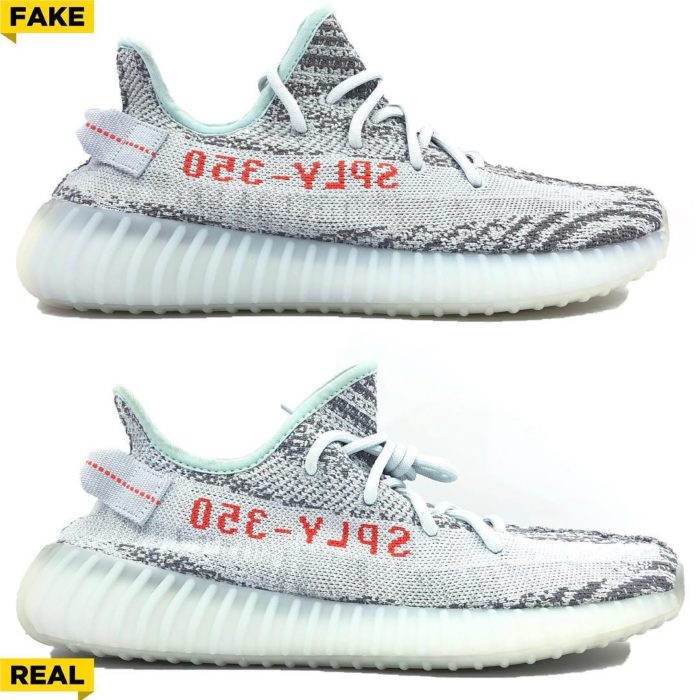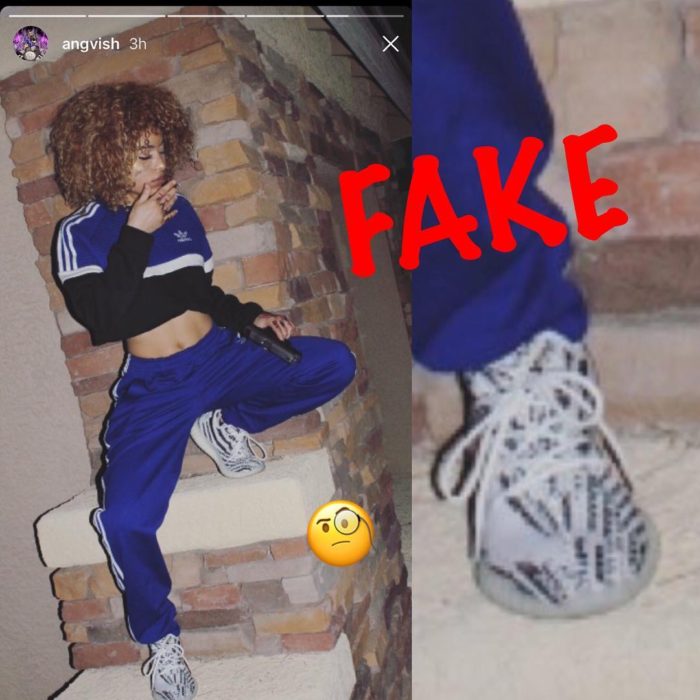Have you seen them propping up between two of your friends’ party photos, those ads on Instagram selling you Yeezy or Balenciaga trainers for 70% off – fake, of course? Just like Facebook was overflowing with fake news articles during the US presidential campaign, ads for fakes have been proliferating on Instagram in the last year.
While this raises questions about Instagram’s vetting process, the main problem to come out of this is that most consumers are not able to tell the difference between real and fake ads, and assume that, because it’s an ad, it’s legit – read GQ writer Kevin Lozano’s account of coming across a fake ad. Despite a big crackdown by Facebook on more than 3 million Instagram posts, fake ads keep coming back, and users are actually buying them knowing they’re fake.
From a cult of the original to a cult of the fake: changing perceptions
There is a lot of thinking around originality, authenticity and copies. Cultural critic and essayist Walter Benjamin talks about the “aura” of a work of art which makes it uniquely present in a time and space. He links this aura to authenticity and argues that a reproduction can never be as good as an original, even if perfect in appearance because it does not have the same spatial and temporal quality as the original, that same “aura”.
David Bellingham, the author of Art and Authenticity, pointed out that a cult of the original and authentic had developed over the last few decades, meaning that original had come to be perceived as more valuable than copies. Before, up until the 18th century, artists would copy their Masters’ work for learning purposes. Now, with the growing importance put on originals and the birth of property and copyright laws, copiers have become forgers. Thus, for the last three centuries, authenticity and the original were valued more than copies, counterfeit, bootlegs, reproductions or fakes. So, are we going back to a pre-18th-century viewpoint where copying is actually good, even trendy?
The counterfeit goods industry is a $1 trillion one, carried out by around 3 million consumers each year. A 2016 study by the Washington Post found that on Instagram, the market of fake luxury goods constitutes a massive shadow economy, facilitating the sale of about $29 billion in counterfeit goods.
While we can argue that Instagram is not doing enough to stop ads for fakes from creeping up on our feeds or Explorer page, there is something else at play here: the role that the fashion industry’s “exclusive model”, adopted predominantly by streetwear brands, is playing in the perpetration of fakes. By functioning on the basis of high price tags and limited edition drops, fashion brands are feeding the phenomenon.
The fake trainer economy: a booming industry
Fakes go two ways today. The first is the production of extra-realistic looking sneakers. Copies are becoming more and more sophisticated by the second, with sellers turning out products that are nearly identical to the real thing, bar a stitching detail or slight colour variation – and so for a sixth or less of the price. A 2015 European Union report even revealed that if an original product was made in China –like the Balenciaga Triple S are now– chances are that its fakes are being made in the same factory, using the same materials and expertise.

KickWhoFactory is China’s biggest counterfeit sneaker producer. On their Instagram page, they share their products, snippets of the production process, and compare the real thing to their fakes, looking at the materials and techniques that go into producing their “Godkiller” –the best of the fakes. Their account is private. It’s only once they accept your following request that you get a phone number to contact them. Because Instagram is just the tip of the iceberg, the starting block, the shop window, linking back to a much wider network where everything actually happens.
Via dark social –private social sharing, such as direct messaging apps, WhatsApp, Snapchat, Instagram messages, etc.– people place their orders but also gets to verify the quality of the product they’re buying through image quality checks. In this sense, a fake shoe appears more real than any original shoe, cutting through the glitz and glamour of marketing ads and creating a direct line of contact between the buyer and the maker, resulting in an authentic buying experience. A few weeks or months later, an almost identical copy of the Off-White Converse you’ve been longing for but couldn’t afford/get your hands on is yours.
But it goes beyond replicating limited-edition drops. A new kind of fakes has hit the black market, the fakest of them all, fakes of sneakers that were never designed or released: simulacra, or copies for which no original has never existed. In shops and factories, collaborations and designs that have never excited become tangible realities. Companies like Ceeze and The Shoe Surgeon have made that their business, turning fake collaborations into real products, the same way any fake producer does, by reverse engineering the making of a real shoe. And just like all the other fake producers, they advertise these hybrid trainers on social media, using Instagram and the likes as their main marketing tool.

The birth of new content creators: the fake vigilantes
The increasing ubiquity of fakes has given birth to a new type of content creators, fake vigilantes who take to Instagram to actively seek out and expose the people wearing fake trainers. Accounts like Fake Educator, Fake Education or Yeezy Busta educate their followers on the sophistication of fake trainers today, showing how sometimes the difference comes down to the stitching. This new generation of anti-counterfeit militia offers “legit checks”: for $10, they evaluate photographs of sneakers on sale and say if they’re real or not. A similar trend lives on Facebook, where communities help each other out on their quest for original trainers.
How can brands fight the counterfeit industry? Blockchain and the fashion industry
While fake vigilantes are a solution for buyers looking to actually buy an original product –crazy, right?– it is not a sustainable solution in the long-term, and more importantly, it is not a viable global solution. That’s where blockchains come in.
A blockchain is a decentralised ledger that records transactions on a database that is accessible worldwide by anyone. While most commonly associated with the world of cryptocurrency, blockchains could go a long way in helping brands in their fight against fakes. Blockchains would enable brands and their manufacturers to document the location, manufacturing and ownership of a product. Buyers could then use this information to verify the originality of a product before any financial transaction has been made, bringing buyers peace of mind that they are not being scammed. If fashion brands started using blockchains, they would be shifting the policing power from the seller, whose motives can be questionable, into the hands of the buyer. This would, in turn, go a long way in helping Instagram vet its ads by giving the app the resources to verify the authenticity of the product being sold.

